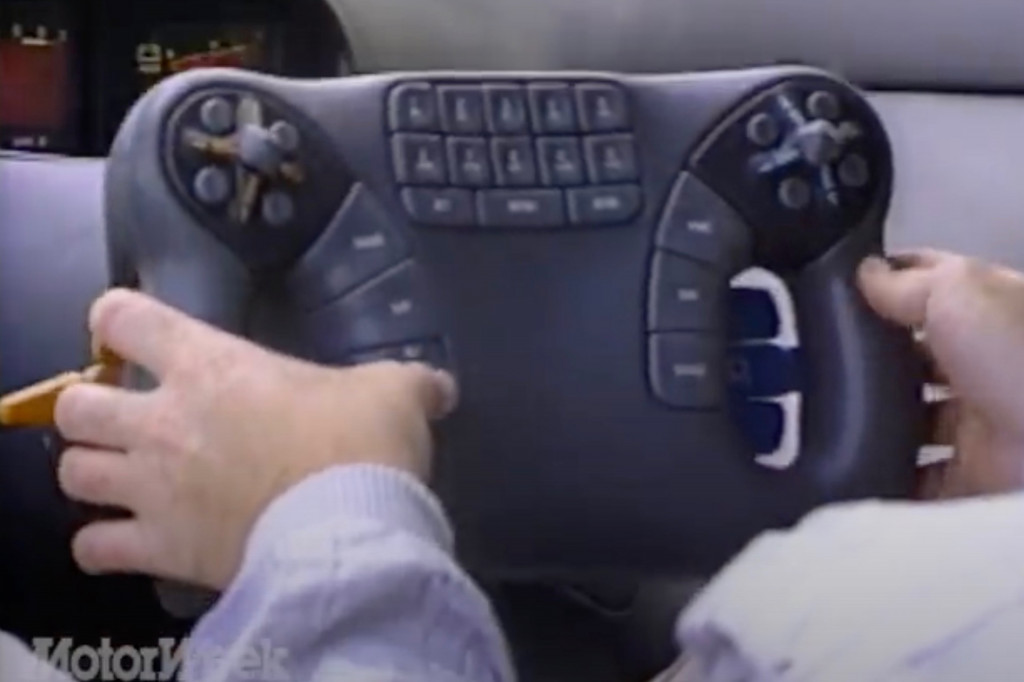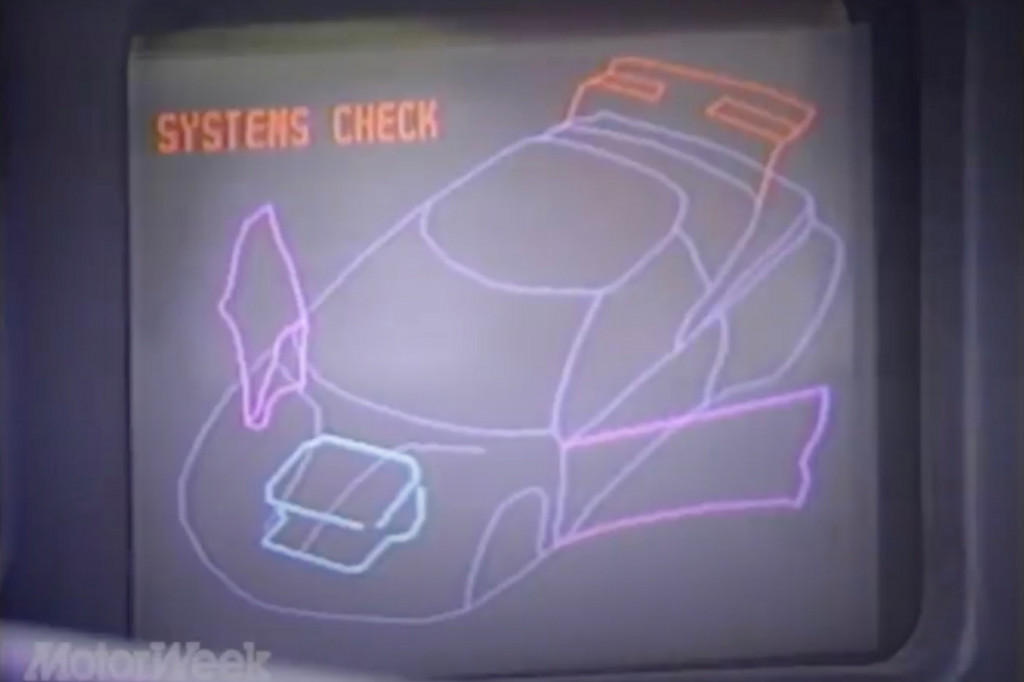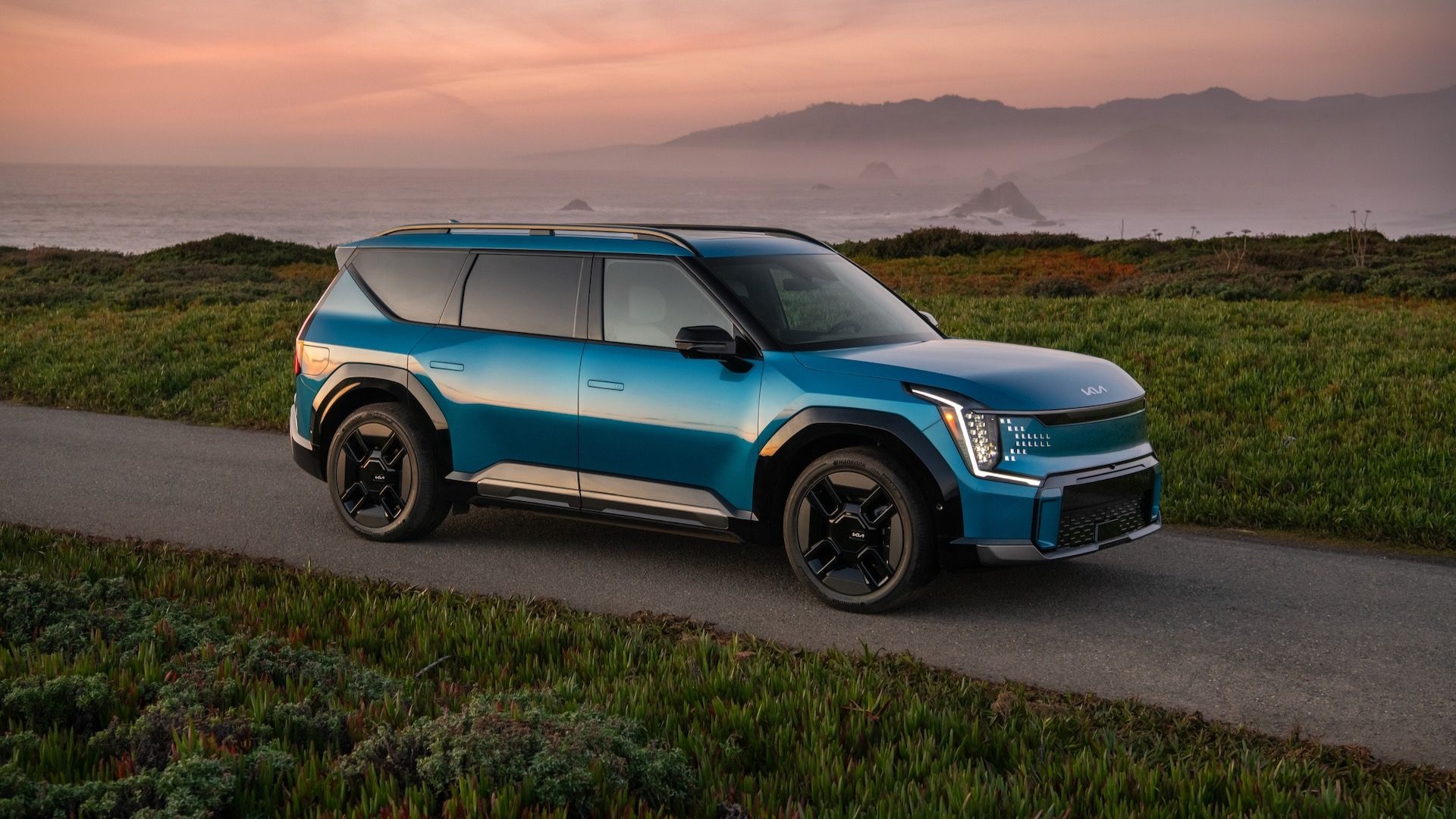Steering yokes and touchpad controls are considered cutting-edge car tech today, but 35 years ago a General Motors prototype had those features and more.
The 1987 Pontiac Pursuit aimed to show what cars would be like in the then-far-off year 2000. MotorWeek recently posted a period review to YouTube, as part of the show's Retro Review series.
Pontiac's designers and engineers actually got some things right, including satellite navigation—or at least the idea of it—plus integrated display screens. Other features were a bit unorthodox.

1987 Pontiac Pursuit prototype on MotorWeek
The Pursuit also had a steering yoke with two large handles and a number of thumb-activated toggles for a digital driver display, which reminds us of the recently introduced Tesla Model S yoke. However, while Tesla's version behaves more or less like a conventional steering wheel, the Pursuit's yoke only turned 180 degrees lock-to-lock.
That's because the yoke was designed to work with a drive-by-wire four-wheel steering system, with no mechanical connection to the road. That resulted in a "total lack of road feel," per the reviewer.
The steering system also allow the Pursuit to crab walk sideways, not unlike the GMC Hummer EV. Tesla has also indicated that it will add a similar feature to the Cybertruck, although it's unclear when that pickup will reach production.

1987 Pontiac Pursuit prototype on MotorWeek
The interior sported front bucket seats with integrated four-point harnesses, built-in rear child seats, and integrated screens for rear-seat passengers—similar to the rear-seat entertainment systems offered in many family vehicles today.
One technology Pontiac missed out on was electrification. The Pursuit was powered by a turbo-4 gasoline engine. However, it set the stage for the all-electric GM Impact concept and the subsequent EV1 production model. The Pursuit's styling also touches on the "kammback" shape that, for aerodynamic reasons, remains the future for cars.
While much of the tech showcased in the Pursuit now a reality, there is one gain that engineers then probably wouldn't have predicted: The kind of steady, incremental battery progress that has made a 500-mile electric vehicle possible without any real packaging concessions.












